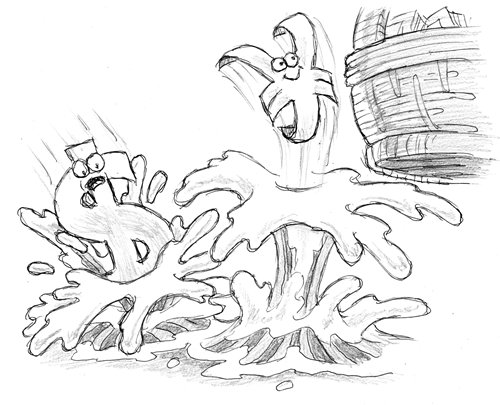
Illustration: Peter C. Espina/GT
The yuan's central parity rate on Thursday strengthened 192 basis points to 6.3724 against the US dollar, the highest level since November 2015. Earlier this month, the People's Bank of China (PBC), the country's central bank, reportedly removed a component known as the counter-cyclical factor from its mechanism of calculating the yuan's daily fixing against the US currency.
Many saw the move as the removal of risk warning for the yuan, signaling that the PBC was becoming more confident about the currency's stability and considering letting the markets play a bigger role in deciding the exchange rate. Nonetheless, the yuan continued appreciating after the change, beating investor expectations. This move also contrasted sharply with a big slide in the yuan last year when the component was introduced.
The yuan's strength, I would argue, is not puzzling at all.
For one thing, it is linked to the US dollar's continued weakness, with the greenback having hit an inflection point. For another, it's related to the fundamentals of China's economy, which has strengthened amid a prudent, neutral monetary policy, deleveraging efforts, and a push for supply-side reforms.
I wrote an article unraveling the counter-cyclical factor when it came into play last year. I reckoned that the addition of the new yuan factor did not have any substantial significance. Instead, it served to support the PBC's efforts to stabilize the currency and reverse depreciation expectations. After all, China has insisted on its managed floating exchange rate regime, which means increased exchange rate flexibility is seen as the main trend of yuan reform. The PBC never promised to give up efforts to manage the exchange rate within a range it deems reasonable when financial risks pile up.
The yuan continued upward for four consecutive months since the PBC's adoption of the counter-cyclical factor into its daily fixing formula. But it was mostly owing to a falling US dollar during the same period. The US Federal Reserve's rate hikes won't necessarily lead to US dollar strength. History indicates a weakening dollar will occur with high probability. Meanwhile, US political uncertainty and the buoyancy of the European economy, among other factors, are resulting in a rebound in the euro against the US dollar.
Looking ahead at this year, I still believe the US dollar will remain weak overall. The currency started 2018 on a weak note, with the US Dollar Index breaking below 90. Despite the dual boost of the US tax overhaul and December rate hike, dollar weakness continues. Factoring in hidden worries about US tax reform over the medium term, the robust recovery of the European economy and lowered political risks in Europe, plus the rising likelihood of a soft Brexit, it is estimated that the US dollar will continue to lose momentum while the 2017 bull run in the euro will carry on. The euro is likely to rise to 1.3 against the US dollar within the year.
Improved fundamentals of the Chinese economy have also propped up the yuan. On the one hand, the economy bounced off multiyear lows in 2017, beating market expectations. China's new economy is thriving with its "four great inventions" in modern times taking the lead globally. In addition, China's exports as a percentage of the global market have gone up in recent years. As I pointed out in a recent speech in Washington DC, China's retail market is expected to unseat the US as the world's largest, another proof of the economy's clout.
On the other hand, China is ramping up efforts to deleverage and it is also maintaining a prudent, neutral monetary policy. In response to a shift in global monetary policy, the PBC has moved toward keeping monetary policy slightly tight.
On top of that, it's a good time to step up the yuan's internationalization as the currency stabilizes. Looking back at the first half of last year, the PBC moved resolutely to stabilize the yuan, rather than following many calls for a one-off depreciation. This turned out to be the correct choice, which insulated the currency against risks and produced financial stability. This can be judged from the continued yuan strength regardless of the removal of the counter-cyclical factor from the daily fixing formula. Nevertheless, unconventional measures that were taken on a provisional basis, essentially a short-term trade-off, inevitably dealt a blow to investor confidence in China's financial market reforms and internationalization. It's necessary to make changes as the script flips. There are signs that the Chinese authorities have already sent out signals that the country will continue to open its capital account.
In a nutshell, it is high time that China considered shifting away from the tough capital controls that were adopted last year to stabilize the currency. This will help to foster two-way capital flows and increase the yuan's two-way fluctuations within a reasonable range to mitigate the risks generated by massive capital flows as a consequence of the currency's one-way appreciation or depreciation.
Based on current trends in China and abroad, I believe that the yuan's main tone for this year will be two-way movement. The yuan's daily fixing against the US dollar is projected to hit about 6.4 by the end of the year.
The modest rise of the yuan against the US dollar will be accompanied by the yuan's slight depreciation against the euro and overall stability against a basket of currencies. The author is managing director and chief economist with Mizuho Securities Asia. bizopinion@globaltimes.com.cn



